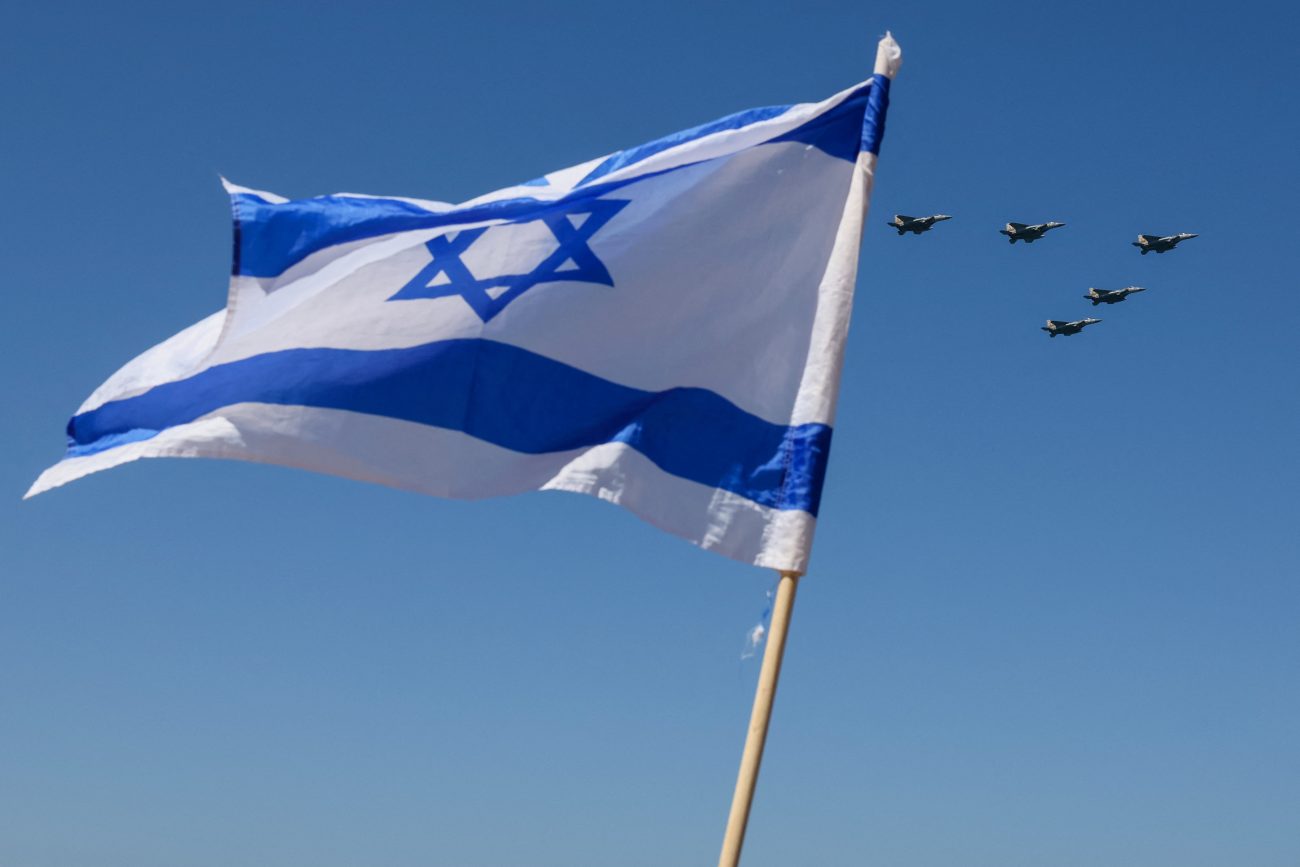The Israeli military has acknowledged that one of its unmanned aircraft has been shot down while operating over Iran. An army statement said the drone had gone down in Iran after being hit by a surface-to-air missile.
“No injuries were reported and there is no risk of an information breach,” it added.
Iranian state television broadcast pictures of the wreckage of what it said was an armed Israeli Air Force Hermes drone in the central city of Isfahan.
Military spokesman Effie Defrin insisted that Israel was “operating freely” over Iran with air strikes that have involved “dozens of aircraft of various types.”
“We will continue to strike anywhere within Iran that we choose. Yes, there is resistance, but we control the skies and will continue to maintain that control,” he told a televised press briefing on Wednesday.
The Israeli military said on Monday it had achieved “total air superiority in the skies over Tehran”.
More than 50 Israeli Air Force fighter jets carried out air strikes in the Tehran area on Wednesday morning, targeting a production facility for uranium enrichment centrifuges among other locations, according to an earlier statement from the military.
US Military Build Up In The Middle East
While mobilizing its military, deploying aircraft carriers and stealth fighter jets to the Middle East, the United States President Donald Trump has indicated that he wants a “real end” to Iran’s nuclear program.
The Israel-Iran conflict began on June 13 with unprecedented airstrikes on Iranian nuclear facilities and top military leadership under Operation ‘Rising Lion.’
The Israeli attack, according to its leadership, was aimed at setting back Iran’s nuclear program by several years.

However, it has since triggered a wider conflict between the two states, with neither side showing any sign of restraint. While the Israel Air Force (IAF) has been bombarding assets deep inside Iranian territory, Tehran is raining down ballistic missiles on Israeli cities of Tel Aviv, Haifa, and Jerusalem.
The United States, Israel’s chief patron, has now started mobilizing military assets and forces in the region, perhaps to coerce Iran into abandoning its nuclear program.
The US Secretary of Defense, Pete Hegseth, recently said in a statement, “Over the weekend, I directed the deployment of additional capabilities to the United States Central Command Area of Responsibility.”
“Protecting US forces is our top priority, and these deployments are intended to enhance our defensive posture in that region,” he added.
According to reports, the F-22s and F-35s, fifth-generation fighters of the US Air Force (USAF), were en route to the Middle East as part of the mobilization. Military observers said this could be in preparation to assist the Israel Defense Forces (IDF) in their campaign, but it does not necessarily mean the US is entering the war.
Earlier, more than two dozen US Air Force KC-135R and KC-46A tankers from all over the United States showed up on flight-tracking applications as they departed their bases and headed east over the Atlantic.
At the time of writing this report, more than a dozen tankers were reportedly headed to the Middle East, according to flight tracking data published by analysts online.
The tankers could be used to aid Israel since the Jewish nation does not have sufficient refuelling capabilities. Or, in a more dire scenario, it could be used to launch a massive mobilisation of USAF fighter jets in case Trump green-lights an attack on Iran after a series of ultimatums.
In addition, the USS Nimitz aircraft carrier has been redeployed from the South China Sea to the Middle East, bringing the number of US aircraft carriers in the region to two. The USS Carl Vinson was deployed to the region earlier this year when the US was bombing the Yemen-based Houthi militia group. Nimitz is expected to reach the Middle East this week.
BREAKING: USS Nimitz carrier strike group sailing toward Middle East ahead of schedule, US official tells @Liz_Friden pic.twitter.com/8YlgttUIMD
— Fox News (@FoxNews) June 16, 2025
Last week, the Pentagon directed two destroyers in the Mediterranean to approach Israel to help defend American interests there. In the past, US destroyers have actively worked to defend Israel against missile and drone attacks.
The aircraft carriers, like USS Nimitz, are also accompanied by destroyers that are equipped to shoot down hostile missiles, and the jets aboard the US carriers are used to thwart attacks and conduct military strikes.
The only difference this time is that Iran is not a non-state actor, and US fighter jets cannot conduct bombings unless the US formally enters the war.
However, the F-35C embarked on Carl Vinson has been crucial in downing Houthi drones in the past. Israel needs as many air defenses as it can get since Iranian missiles have widely breached its layered air defense and struck strategic assets like the Mossad headquarters.
Since the current conflicts began last week, US air, naval, and ground forces have already been helping to defend Israel. This also includes the Patriot system and the Terminal High Altitude Area Defense (THAAD).
Moreover, Iranian missiles aimed at Israel have also been intercepted by Arleigh Burke-class destroyers and/or Ticonderoga-class cruisers.
The Third-Stage Rocket Motor for a US Navy RIM-161 SM-3 Block IB Surface-to-Air Missile was discovered on June 14, as per photos that were later published by Open Source Intelligence (OSINT) analysts.
Coercing Iran Into “The Real Deal”?
On the fifth day of the war, President Donald Trump said he wants a “real end” to the nuclear conflict with Iran and hinted that he could send top US officials to speak with the Islamic Republic.
However, Iran insists that for any diplomacy to work, Israel needs to stop the bombing.
Trump has maintained that the Israeli attack would end if Iran agreed to US demands that it accept strict curbs on its nuclear program. In essence, both Trump and Israeli Prime Minister Benjamin Netanyahu want Iran to give up its nuclear program entirely.
Iran has consistently assured Trump and the international community that it does not intend to make an atomic bomb. In fact, Tulsi Gabbard, the US Director of National Intelligence, had said in March 2025 that Iran was not actively pursuing a nuclear weapon, and it was also up to three years away from being able to produce and deliver one.
The US and Iran were conducting negotiations on a potential nuclear deal, with the sixth round of talks scheduled on June 15, in Oman. However, before that could happen and a deal could be agreed upon, Israel launched unprovoked and unprecedented military strikes on Iran’s nuclear facilities, killing Iran’s nuke scientists as well as the top command of the Iranian Revolutionary Guards Corps (IRGC).
While Trump initially made it look like the US did not sanction the strike, he later admitted that he was fully apprised of Israel’s Operation Rising Lion. He has lamented Iran’s retaliation to the Israeli attacks, and has warned Tehran of dire consequences if Iranian missiles strike American troops in the region.
Trump has also dismissed a potential ceasefire and stressed the “real end,” which means to coerce Iran into abandoning the nuclear program altogether. However, there is also a looming threat of the US entering the war to finish what Israel started.
After the International Atomic Energy Agency (IAEA) chief Rafael Grossi revealed on June 16 that the Israeli strikes had caused limited damage to Iran’s nuclear facilities and not obliterated its underground enrichment facilities, several analysts and military bloggers have called for the US to decisively end Iran’s nuclear program.
For instance, some analysts have stated that only the most lethal and the heaviest bunker buster bomb—the GBU-57A ‘Mother of All Bombs’—can destroy Iran’s enrichment facilities that are buried deep inside the ground and hidden beneath mountains. Only the United States possesses the bomb that can be dropped using the B-2 strategic stealth bomber.



